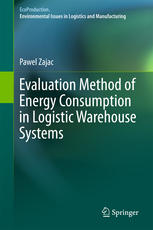

Most ebook files are in PDF format, so you can easily read them using various software such as Foxit Reader or directly on the Google Chrome browser.
Some ebook files are released by publishers in other formats such as .awz, .mobi, .epub, .fb2, etc. You may need to install specific software to read these formats on mobile/PC, such as Calibre.
Please read the tutorial at this link: https://ebookbell.com/faq
We offer FREE conversion to the popular formats you request; however, this may take some time. Therefore, right after payment, please email us, and we will try to provide the service as quickly as possible.
For some exceptional file formats or broken links (if any), please refrain from opening any disputes. Instead, email us first, and we will try to assist within a maximum of 6 hours.
EbookBell Team

5.0
18 reviewsThis book focuses on guidelines for reducing the energy consumption in warehousing processes. It presents a model of formal assessment for energy consumption in the context of storage-system logistics, as well as a computational model consisting of three sub-models: energy consumption models for forklifts and stacker cranes, respectively, and an energy intensity model for roller conveyors. The concept model is based on the assumption that the unit load is received at a zero-energy warehouse. Subsequent handling, transport and storage processes, in which the unit load is moved vertically and horizontally through the system, equate to changes in energy intensity within the logistics warehouse management system. Energy recovery based on the handling equipment used can be collected in batteries. The evaluation method takes into account the intensity of the energy supplied to the logistics system and reduces the storage of the recovered energy - this figure represents the energy needed to pass through the logistics unit load storage system, and can be expressed in an energy intensity map.